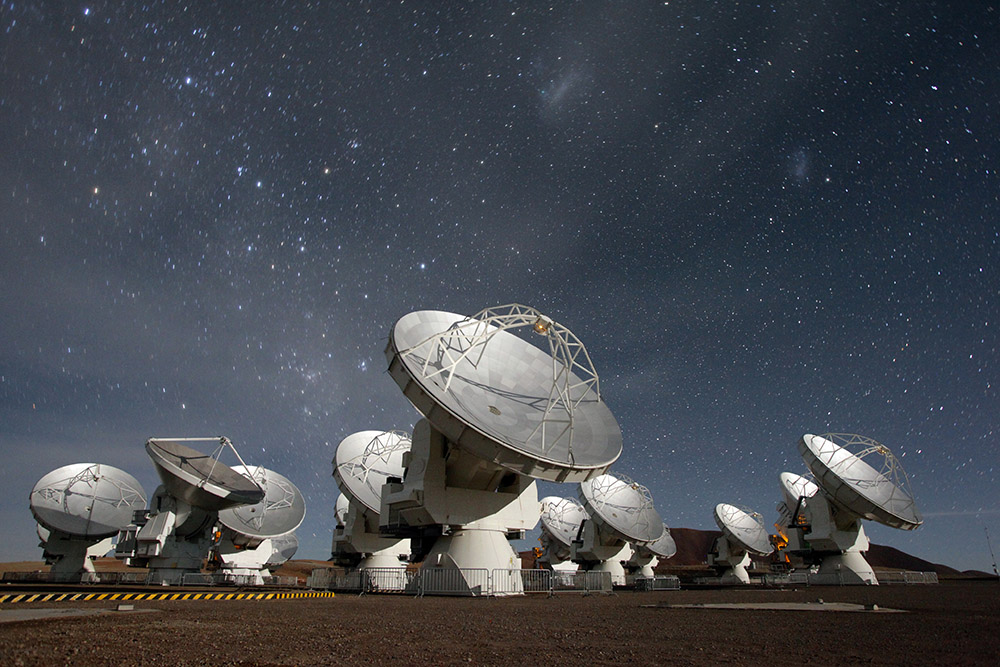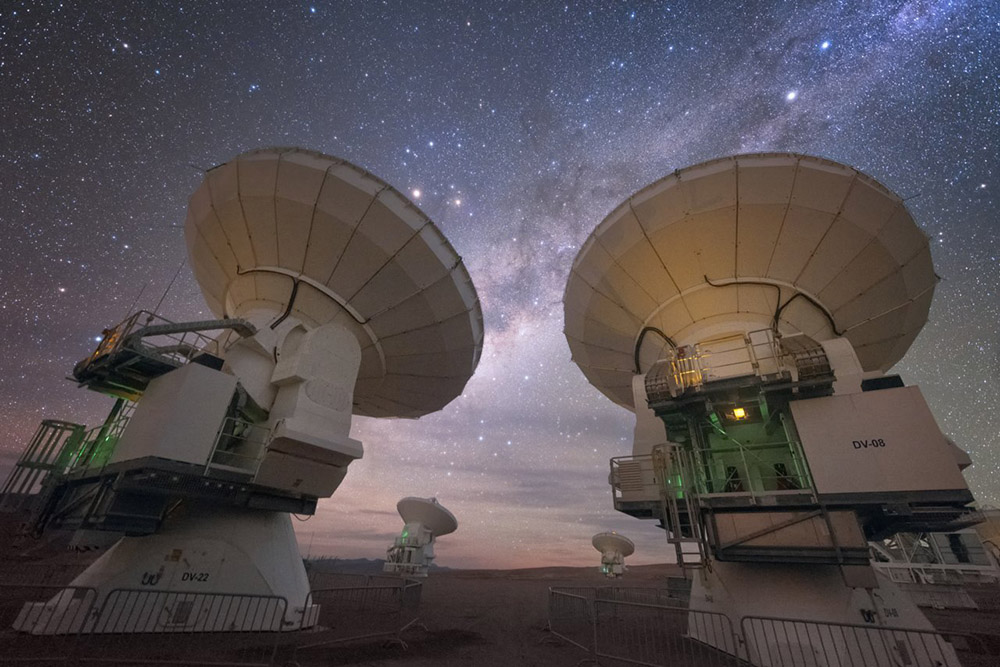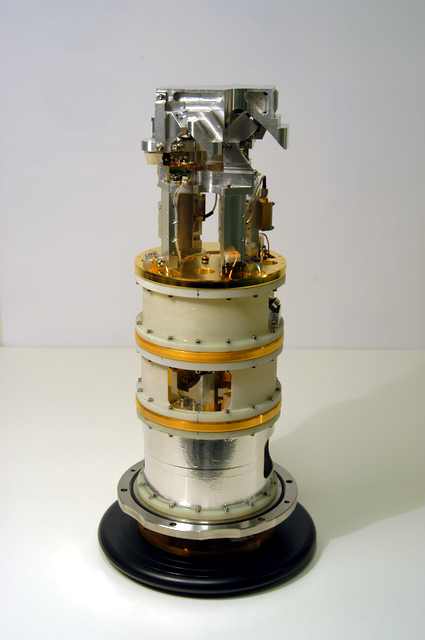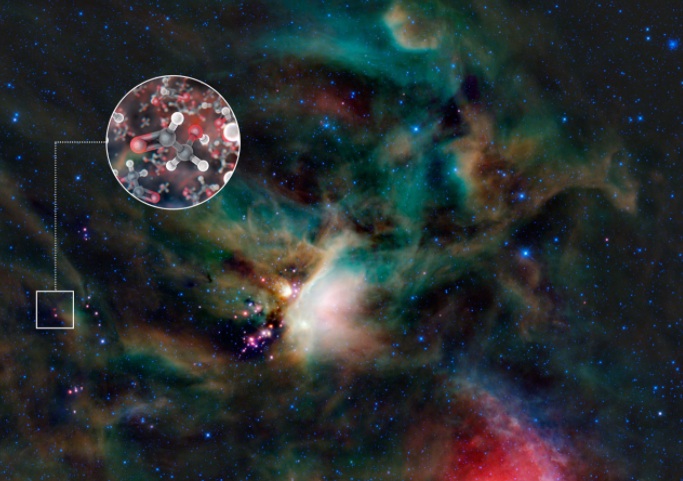




ALMA (Atacama Large Millimeter/submillimeter Array) is a ground-based radio observatory with the world’s largest collecting area in the millimeter and submillimeter regime. ALMA’s 66 antennas have diameters of 7 and 12 meters and can be spread out across an area 16 kilometers across. Together they form an interferometer, providing the telescope with the same spatial resolution as a giant single 16-km diameter dish would have. ALMA gets its sensitivity from the antennas’ combined surface of over 6,000 m2. The observatory is located at 5,000 meters altitude in northern Chile on the Chajnantur plateau. ALMA is a collaboration between Europe, the US, Japan and Chile.
ALMA enables research into the physics of the ‘cold universe’, such as the study of the formation of planets and the first stars and galaxies.
Science
Astronomers use ALMA to study the first stars and galaxies that emerged from the cosmic ‘dark ages’, billions of years ago. The light from these objects travelled billions of lightyears to reach us. Along the way it has been stretched out to millimeter and submillimeter wavelengths by the expansion of the Universe.
In the more nearby Universe, ALMA provides the ability to study the formation of stars and planets. Unimpeded by the dust that obstructs visible-light observations, ALMA reveals details of young, still-forming stars, and even young planets in the process of developing. The observatory also allows scientists to learn about the complex chemistry of the giant clouds of gas and dust that spawn stars and planetary systems.
Technology
The construction of ALMA was completed in 2013, but the first scientific observations were already done in 2011. Each of ALMA’s 66 telescopes is equipped with 10 different frequency band receivers for observations, ranging from 31 GHz to about 950 GHz, corresponding to 9.6 – 0.3 mm wavelength. Most receivers are based on SIS heterodyne mixers, enabling spectroscopic observations with a resolution of up to 3.8 kHz.
The NOVA-ALMA group at SRON Groningen was contracted in 2003 for the development and realization of 66 Band 9 receivers and in 2012 for the same number of Band 5 receivers.
The Band 9 receivers observe in the high frequencies, from 602 to 720 GHz, corresponding to 0.42-0.50 mm wavelength. The high-altitude location of ALMA was mainly selected for these high-frequency band receivers.
The Band 5 receivers observe the universe in the 163-211 GHz frequencies, corresponding to wavelengths of 1.42-1.84 mm. This is the only frequency band in which water can be detected from the ground, behind Earth’s atmosphere. Band 5 therefore increases the capabilities of the ALMA telescope to search the cosmos for water and the conditions needed for life.
The Band 5 and Band 9 receivers use detector technology legacy of SRON’s molecule detecting instrument HIFI, on board the Herschel space telescope (ESA).


